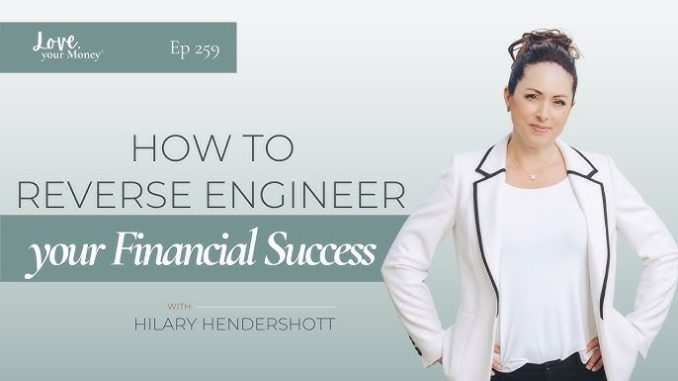
Reverse engineering your retirement plan is a strategic way to take control of your financial future by starting with the end in mind. Instead of guessing how much to save or relying on generic benchmarks, this approach encourages you to define what retirement looks like for you—then work backward to build a plan that supports it. It’s a process that requires clarity, intentionality, and a willingness to ask deeper questions about your lifestyle, values, and long-term goals. By doing so, you move from vague aspirations to a concrete, personalized roadmap.
The first step is to visualize your retirement in detail. This isn’t just about picking an age or a dollar amount—it’s about understanding how you want to live. Will you travel frequently, downsize your home, start a small business, or simply enjoy a quiet life with family? Each scenario carries different financial implications. For example, someone who dreams of living abroad will need to account for currency fluctuations, healthcare access, and residency requirements, while someone planning to stay local may focus more on property taxes and community costs. The clearer your vision, the more accurately you can estimate your future expenses.
Once you’ve defined your retirement lifestyle, the next move is to calculate what it will cost. This involves projecting your annual expenses during retirement and multiplying them by the number of years you expect to be retired. It’s important to factor in inflation, healthcare costs, and potential changes in spending habits. For instance, while commuting expenses may disappear, healthcare costs often rise with age. You’ll also want to consider whether you’ll carry any debt into retirement or if you plan to support dependents. These variables help you arrive at a realistic target for your retirement savings.
With your retirement cost estimate in hand, you can begin to assess your current financial position. This includes reviewing your savings, investments, pensions, and any other income sources you expect to have in retirement. Social Security, rental income, annuities, or part-time work can all contribute to your retirement cash flow. For example, someone with a modest pension and a paid-off home may need less in liquid savings than someone relying solely on investment withdrawals. Understanding what you already have allows you to identify the gap between your current trajectory and your retirement goal.
Bridging that gap is where reverse engineering becomes powerful. You can now determine how much you need to save annually to reach your target, based on your timeline and expected investment returns. This step transforms retirement planning from a vague hope into a measurable objective. For instance, if you’re 40 and want to retire at 65 with $1 million, and you currently have $200,000 saved, you can calculate how much to contribute each year assuming a 6% return. This clarity helps you make informed decisions about budgeting, investing, and lifestyle choices today.
Reverse engineering also encourages smarter investment strategies. Knowing your target and timeline allows you to choose asset allocations that balance growth with risk. Early in your career, you may lean toward equities for higher returns, while later you might shift toward bonds or income-generating assets to preserve capital. For example, someone who’s ten years from retirement might begin reallocating their portfolio to reduce volatility, ensuring that market downturns don’t derail their plans. This proactive approach helps you stay aligned with your goals and reduces the likelihood of emotional decision-making.
Tax planning is another critical element that becomes clearer through reverse engineering. Understanding how your retirement income will be taxed allows you to optimize your savings vehicles. Roth IRAs, traditional IRAs, 401(k)s, and taxable accounts each have different implications. For instance, someone expecting to be in a higher tax bracket during retirement might prioritize Roth contributions now, while someone anticipating lower income might benefit more from traditional pre-tax savings. These decisions can significantly impact your net retirement income and should be integrated into your broader strategy.
Flexibility is key throughout this process. Life rarely unfolds exactly as planned, and your retirement vision may evolve. Reverse engineering doesn’t lock you into a rigid path—it gives you a framework that can adapt. If your goals shift, you can revisit your projections and adjust your savings rate, retirement age, or spending expectations. For example, if you decide to retire earlier than planned, you may need to increase contributions or reduce expenses. The beauty of this approach is that it keeps you engaged and responsive, rather than passive or reactive.
It’s also important to recognize that retirement planning isn’t just about numbers—it’s about purpose. Reverse engineering invites you to think deeply about what you want your later years to look like and how your financial choices today can support that vision. It’s a chance to align your money with your values, whether that means financial independence, family time, philanthropy, or personal growth. For instance, someone who values freedom might prioritize building passive income streams, while someone focused on legacy might invest in education funds or charitable giving.
Ultimately, reverse engineering your retirement plan transforms a distant goal into a tangible strategy. It empowers you to make decisions with confidence, knowing they’re rooted in a clear understanding of your future needs and desires. It’s not about chasing arbitrary numbers—it’s about designing a life that reflects who you are and what you care about. And when you approach retirement planning with that level of intention, you’re not just preparing for the future—you’re shaping it.